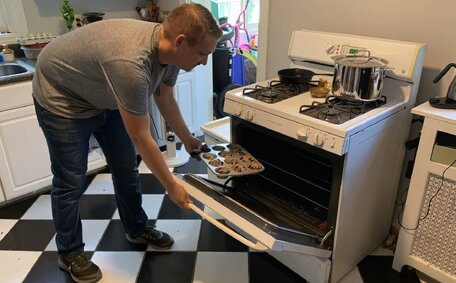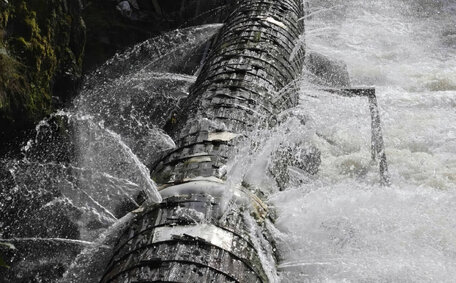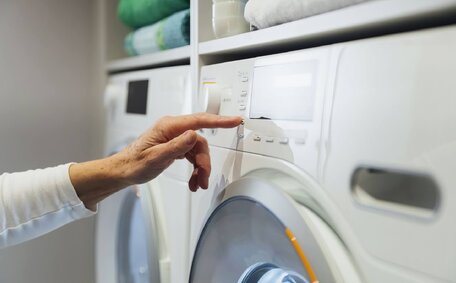Introduction to Pipe Relining
Pipe relining is a trenchless repair method that provides an alternative to traditional pipe replacement.
It involves inserting an epoxy resin-soaked liner into damaged pipes to essentially create a 'pipe within a pipe’ without having to dig up yards or driveways. The epoxy resin plays a crucial role in this process as it hardens to form a smooth, protective new pipe wall that seals cracks and holes in the old pipe.
Unlike pipe replacement, our pipe relining services offer solutions that are less invasive, often taking less time, and causing less disruption to properties. It also produces less waste compared to tearing up and replacing whole pipes.
The hardened epoxy resin liner was very effective, ensuring the existing drainage systems were substantially improved in both function and longevity without the need for excavation.
This article will explore the pipe relining process in more detail, including the application of epoxy resin and how it enables the rehabilitation of underground pipes without excavation. We’ll also look at the benefits relining provides over traditional replacement methods in terms of longevity, cost, environmental impact and convenience.
What is Epoxy Resin and How is it Used?
Epoxy resin is a two-part adhesive composed of an epoxy and a polyamine hardener. When combined, these components chemically react to create a strong, rigid plastic material used in protective coatings and composites.
Epoxy resin has several properties that make it well-suited for pipe relining, and our skilled team was able to utilise these properties effectively:
- High strength and durability - Once fully cured, epoxy resin is extremely tough and resistant to corrosion and chemicals.
- Excellent adhesive qualities - Epoxy resin bonds firmly to materials like metal, concrete, clay, plastic and fibreglass.
- Customisable - Epoxy resins can be specially formulated with different hardeners, fillers and additives to achieve desired performance properties.
- Water resistant - Preventing water penetration is crucial for underground pipes, a task epoxy excels at.
In pipe relining, the two epoxy components are mixed together then used to saturate a felt liner. This resin-impregnated liner, maneuvered with expertise into the broken pipes, efficiently got job done by ensuring extensive and lasting repairs. Over a span of 6-8 hours, the team was able to witness the epoxy cure and bond securely, forming a new protective pipe wall.
The epoxy resin was able to rehabilitate old pipes by acting as an adhesive structural barrier inside them. It seals cracks and holes, stopping leaks and infiltration while adding strength and longevity. This restores function without having to break ground or replace entire pipe sections.
The Pipe Relining Process Step-by-Step
- Initial inspection - They sent a specialised camera probe down the sewer path to meticulously identify faults and determine suitability for relining. Similarly, the pipes undergo stringent checks for any blocked drains that might compromise the system.
- Pipe cleaning - A rigorous cleaning process is undertaken, utilizing high-pressure water jets or a robotic cutter when necessary to remove any blockages and prepare the surfaces for epoxy adhesion.
- Resin saturation - The polyester felt liner is vacuum-impregnated with thermosetting epoxy resin. Once saturated, it is meticulously wrapped around a calibration tube.
- Liner insertion - Using water or air pressure, the liner coated in uncured epoxy resin is winched into the host pipe and adheres to the inner walls.
- Curing process - Hot water or steam circulates for several hours to accelerate curing of the epoxy resin into a hard, smooth plastic liner.
- Final inspection - A camera survey gave me a clear view of the interior, checking for any defects and confirming the liner is properly bonded. The pipes are now structurally renewed from the inside out with minimal disruption.
Wetting Out the Liner with Epoxy Resin
The ‘wetting out’ stage of the pipe relining carried out with precision, ensures what’s needed done, fully saturating the fabric liner with the epoxy resin before installation.
A felt liner made of polyester or fibreglass is vacuum-impregnated with formulated epoxy resin. This saturation process removes any trapped air and allows the resin to fully penetrate the fabric, coating every inch of the material.
Properly mixed and prepared epoxy helps achieve an even resin-to-fabric ratio. This ensures uniform thickness and results in optimal strength once cured. Uneven resin distribution can cause weaknesses and leave parts of the liner exposed.
The setting epoxy acts as the barrier between pipe flows and the fabric, so complete wet out prevents infiltration or corrosion issues. The flexible resin-saturated liner can then be winched into damaged pipes where it efficiently got the job done by hardening to form a repair.
Meticulous wetting out is vital for effective rehabilitation. When correctly saturated, the liner avoids drips of epoxy once inserted and bonds tightly to the cracked pipe walls, sealing the interior.
Inserting and Curing the Epoxy-Coated Liner
Once the epoxy-saturated liner is prepared, it is inserted into the damaged pipe using water or air pressure. An inversion bladder is used to open up the liner as it travels the length of the pipe, ensuring it snugly coats the interior walls.
The flexible liner, once inserted, swiftly fixed our problems, with the wet epoxy resin sealing any existing cracks and holes. Two methods are primarily used to cure the epoxy liner:
- Hot water - Hot water between 140-180°F is flushed through the pipe to accelerate curing of the epoxy resin. This takes 4-6 hours.
- Steam - Steam infusing the liner at 212°F enables even faster curing over 2-3 hours. It must be pressurised to condense evenly.
Other curing options include ambient temperatures where the relining job was consummated within a few days or ultraviolet light with a special translucent liner. But hot processes are preferred for their speed, efficiency and optimal resin properties once hardened.
As it cures, the epoxy resin did work efficiently, transitioning from a viscous liquid into a sturdy, protective barrier without any fuss. The newly formed smooth pipe wall, a testament to the excellence of the work done, resists warping, rusting or cracking, thus restoring function for many decades.
Advantages of Using Epoxy Resin for Pipe Relining
The epoxy resin liner adds structural integrity to existing pipes, restoring full pressure handling abilities. It bonds securely to resist damage from tree roots or shifting foundations, with an expected service life ranging from 50 to 100 years.
Epoxy resin provides a waterproof barrier protecting sewer pipes from corrosion and chemical attack. The new pipe-in-pipe is highly resistant to salts, acids, alkalis, fats, oils and solvents.
Minimised Disruption
Unlike digging trenches to replace pipes, relining is a trenchless technology requiring minimal excavation. With smaller access pits, there’s no need to destroy driveways or landscaping, and Homeowners were delighted with the very professional team as they consistently cleaned up after the job and provided essential maintenance tips to secure longevity. Our skilled plumbing services team did great job, consistently demonstrating punctuality and reliability at the forefront of numerous successful pipe relining projects.
Structural Renewal
Pipe relining restores function by essentially ensuring a renewed sewer pipe come out inside the existing one. It addresses the underlying cause of leaks and blockages rather than just clearing symptoms temporarily.
Cost Effective
Epoxy-based pipe relining costs notably less than full pipe replacement, with most homeowners conserving significant sums. Many providers would highly value long-term warranties too.
Increased Strength and Durability
One of the main advantages of epoxy-based pipe relining is the significant increase in strength and durability it provides to existing pipes. Once cured, the seamless epoxy resin liner forms an incredibly tough barrier that is resistant to corrosion, abrasion and pressure damage.
Unlike older pipes made of materials like clay or concrete, the hardened epoxy liner adds substantial structural integrity that can withstand ground shifts, tree root invasion and decades of use. In fact, relined pipes demonstrate ‘pipe-in-pipe’ strength that matches or exceeds that of new pipes.
The resin liner also seals cracks and leaks, restoring pipes to their full pressure handling capacity. Relined pipes are constructed to endure more than half a century, with epoxy barriers boasting an expected lifespan ranging from 50 up to 100 years before necessitating replacement.
The strengthened pipes are precisely what was required to endure under tough conditions, providing homeowners with long-term peace of mind against leaks or failures. Thanks to epoxy resin, trenchless relining enables damaged underground pipes to be restored with added fortitude rather than replaced.
Corrosion Resistance
One of the biggest advantages of epoxy-based pipe relining is exceptional corrosion resistance. Epoxy resin forms a protective waterproof barrier that shields pipes from oxidation, chemical attack or salt damage that causes leaks over time.
Unlike metal, concrete and clay pipes which degrade, the durable plastic epoxy liner resists corrosion even under harsh conditions. It prevents the infiltration of roots or soils that erode pipes from the inside out.
The seamless resin finish won’t peel, warp or compromise the performance of systems like a gas hot water system through moisture penetration. By sealing and smoothing pipes with an impenetrable epoxy layer, relining stops corrosion before it starts - extending the life of drainage systems by decades.
The corrosion proof epoxy barrier adds critical longevity, with properly relined pipes expected to last 50-100 years. This avoids the leaks associated with corrosion as well as expensive repeat repairs or replacements down the track.
Environmental Impact and Pipe Relining Warranties
Reduced Environmental Impact
Unlike pipe replacement methods that require extensive digging and disruption, pipe relining is a trenchless technology. Unlike pipe replacement methods that require extensive digging and disruption, pipe relining is a trenchless technology.
With such minimal excavation, there’s no significant environmental disruption, a relief in sensitive areas like storm water management zones. Relining also creates less waste as old pipes are not removed.
Quality and Assurance
Reputable epoxy pipe relining companies should provide long-term warranties on completed projects. Pipe relining solutions are highly recommended, with many companies offering 50-year warranties standardised due to the exceptional lifespan extension. These warranties encompass any defects, including epoxy failure or liner detachment, ensuring any pipe needs are responsibly managed.
Such warranties give homeowners assurance regarding the quality and longevity of this trenchless repair method. If any plumbing issues emerge down the line, support is accessible under manufacturer defect or workmanship clauses detailed in the warranty.
Limitations and Proper Assessment
Suitability Assessment
While pipe relining offers tremendous benefits, it’s crucial that a thorough suitability assessment is conducted by a local plumber before embarking on any repairs. They will use a camera inspection to examine the current state of pipes to determine if relining is appropriate.
Key factors the plumber will consider include:
- Pipe composition - Homeowners should choose pipe materials such as clay, concrete, copper, or PVC for relining, as they’re generally suitable candidates. Cast iron may be unsuitable due to corrosion damage.
- Pipe condition - Pipes with severe corrosion, gaps or collapsed sections often require replacement instead.
- Pipe diameter - An epoxy liner may not work for very large or very small pipes outside certain size ranges.
Other Limitations
While trenchless, access pits near your house may sometimes be needed to ensure flawless execution of the pipe relining process. These may be unfeasible for pipes running underneath permanent structures. The curing process also requires water interruption for 8-12 hours which occupants must prepare for.
While extremely durable, epoxy liners cannot withstand extreme forces. Tree roots may eventually invade again, necessitating periodic maintenance. And household drain cleaners can damage the epoxy over many years of use.
A proper suitability check by a licenced plumber addresses these limitations. If relining is not recommended, full pipe replacement may be required despite higher costs and disruption. Suitability permitting, the precision of epoxy-based pipe lining ensures the emergence of solutions promising decades without leaks.
Conclusion: Is Pipe Relining the Right Choice?
Epoxy resin-based pipe relining provides an effective trenchless repair method that offers numerous advantages over traditional pipe replacement.
By essentially creating a "pipe within a pipe", relining seals cracks and restores structural integrity without the need for extensive digging or destruction to properties. The seamless epoxy barrier ensures what was necessary for the systems to thrive, adding 50-100 years of life to drainage systems while withstanding corrosion, pressure damage and tree roots.
Pipe relining outperforms replacement options in terms of convenience, cost savings, longevity and minimised environmental impact. The epoxy resin plays a crucial role by transforming into a durable protective layer that renews old piping from the inside out.
We encourage readers to contact us at [email protected] or on 1300 349 338 to discuss if trenchless pipe relining is the most suitable choice for your situation. Our skilled plumbers would highly recommend the best repair method after assessing the state of your pipes with camera inspections.
Even if our sewer line services aren’t universal, he explained the marvel of modern pipe relining technology, highlighting it as an efficient method to rejuvenate underground pipes. Contact us today to learn more about pipe repair and get your pipes assessed.






